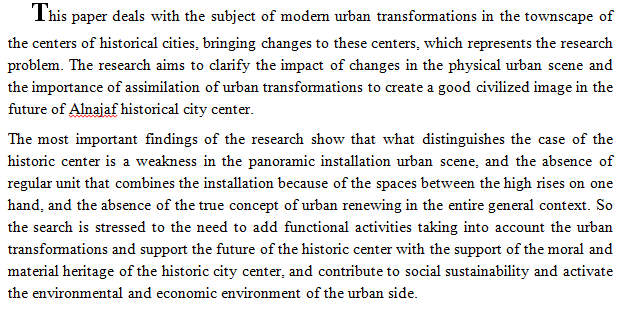
In this research, the study effect of irradiation on structural and optical properties of thin film (CdO) by spray pyrolysis method, which deposited on glasses substrates at a thickness of (350±20)nm , The flow rate of solution was 5 ml/min and the substrate temperature was held constant at 400˚C.The investigation of (XRD) indicates that the (CdO) films are polycrystalline and type of cubic. The results of the measuring of each sample from grain size, micro strain, dislocation density and number of crystals the grain size decreasing after irradiation with gamma ray from(27.41, 26.29 ,23.63)nm . The absorbance and transmittance spectra have been recorded in the wavelength range (300-1100) nm in order to study the optical properties. the op
... Show MoreMany designs have been suggested for unipolar magnetic lenses based on changing the width of the inner bore and fixing the other geometrical parameters of the lens to improve the performance of unipolar magnetic lenses. The investigation of a study of each design included the calculation of its axial magnetic field the magnetization of the lens in addition to the magnetic flux density using the Finite Element Method (FEM) the Magnetic Electron Lenses Operation (MELOP) program version 1 at three different values of current density (6,4,2 A/mm2). As a result, the clearest values and behaviors were obtained at current density (2 A/mm2). it was found that the best magnetizing properties, the high
... Show More (1)
(1)
raisin on mice in comparison with negative (phosphate buffer saline (PBS) and positive Mitomycin-C (MMC) controls. Moreover, the effect on fertility hormones (follicles stimulation hormone/FSH, lutenising hormone/LH) was also measured. The effect of the extracted samples were measured by employing cytogenetic analysis which included (the mitotic index (MI), chromosomal aberrations (CAs) and micronucleus (MN)) parameters. Results showed that significant increase in MI and significant reduction in both CAs and MN percentage were seen after treatment with both alcoholic and water extracts of the two raisins and alcoholic extracts was more effective than water extracts. On the other hand both the gold and black raisin enhanced the levels of the
... Show MoreIn this study, SnO2 nanoparticles were prepared from cost-low tin chloride (SnCl2.2H2O) and ethanol by adding ammonia solution by the sol-gel method, which is one of the lowest-cost and simplest techniques. The SnO2 nanoparticles were dried in a drying oven at a temperature of 70°C for 7 hours. After that, it burned in an oven at a temperature of 200°C for 24 hours. The structure, material, morphological, and optical properties of the synthesized SnO2 in nanoparticle sizes are studied utilizing X-ray diffraction. The Scherrer expression was used to compute nanoparticle sizes according to X-ray diffraction, and the results needed to be scrutinized more closely. The micro-strain indicates the broadening of diffraction peaks for nano
... Show More (2)
(2)
 (15)
(15)
Sixty urine samples were collected from women with urinary tract infection in different ages. The aims of this study were determined the dominancy of pathogens isolated from urine of women with UTI and evaluating the antibacterial activity of Rosmarinus officinalis L. essential oil against these pathogenic isolates. Identification of bacteria was done on Chromogenic orientation agar while disc diffusion method was used for determination the sensitivity of bacterial isolates to antibiotics and Agar well diffusion method was used for evaluation the antibacterial effect of Rosemary essential oil on these isolates. The results showed that 50% of women infected with Escherichia coli, it was dominants in ages above 15 years old while Staphyl
... Show More (4)
(4)
Sixty urine samples were collected from women with urinary tract infection in different ages. The aims of this study were determined the dominancy of pathogens isolated from urine of women with UTI and evaluating the antibacterial activity of Rosmarinus officinalis L. essential oil against these pathogenic isolates. Identification of bacteria was done on Chromogenic orientation agar while disc diffusion method was used for determination the sensitivity of bacterial isolates to antibiotics and Agar well diffusion method was used for evaluation the antibacterial effect of Rosemary essential oil on these isolates. The results showed that 50% of women infected with Escherichia coli, it was dominants in ages above 15 years old while Staphylococc
... Show More (8)
(8)
